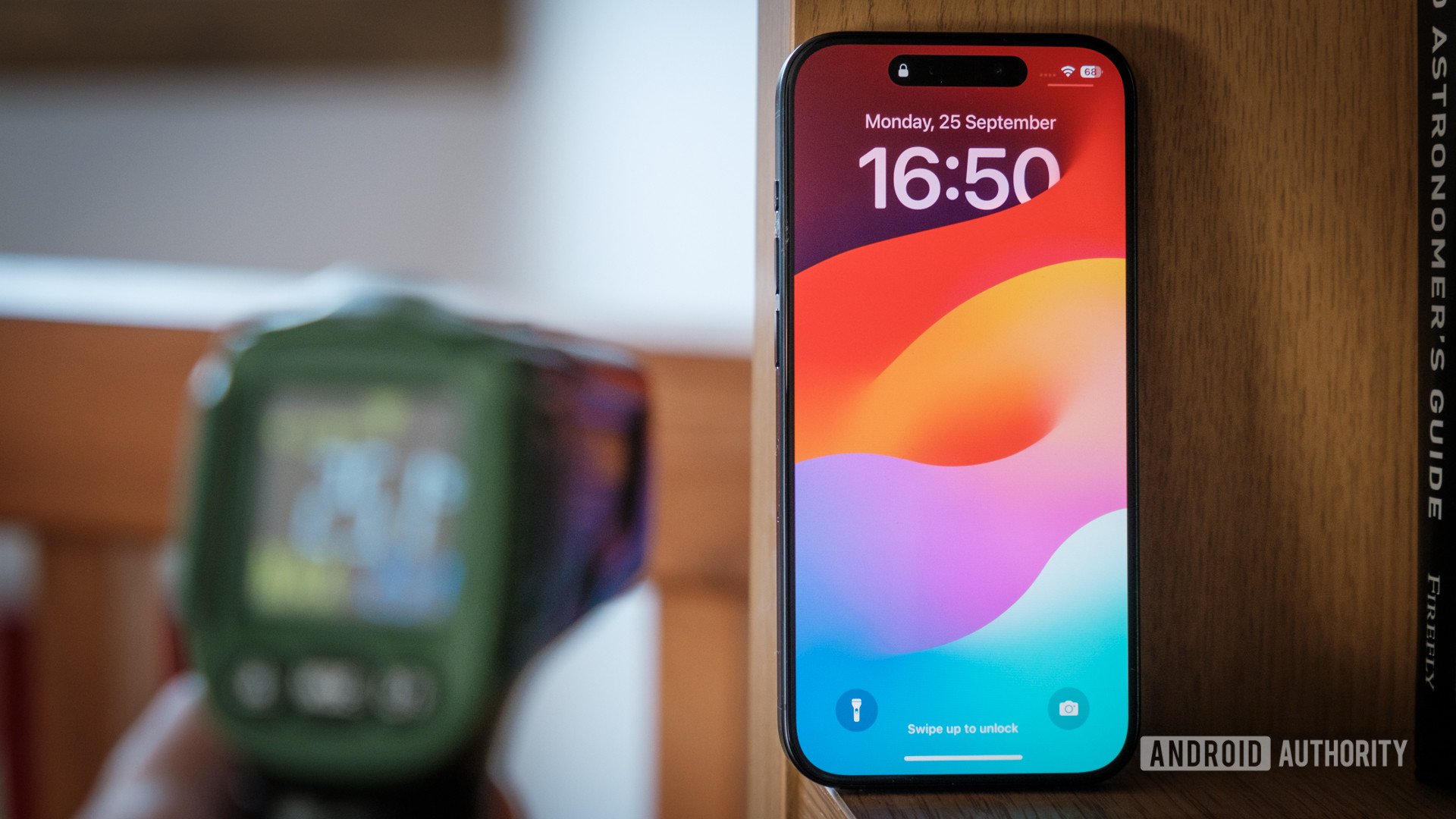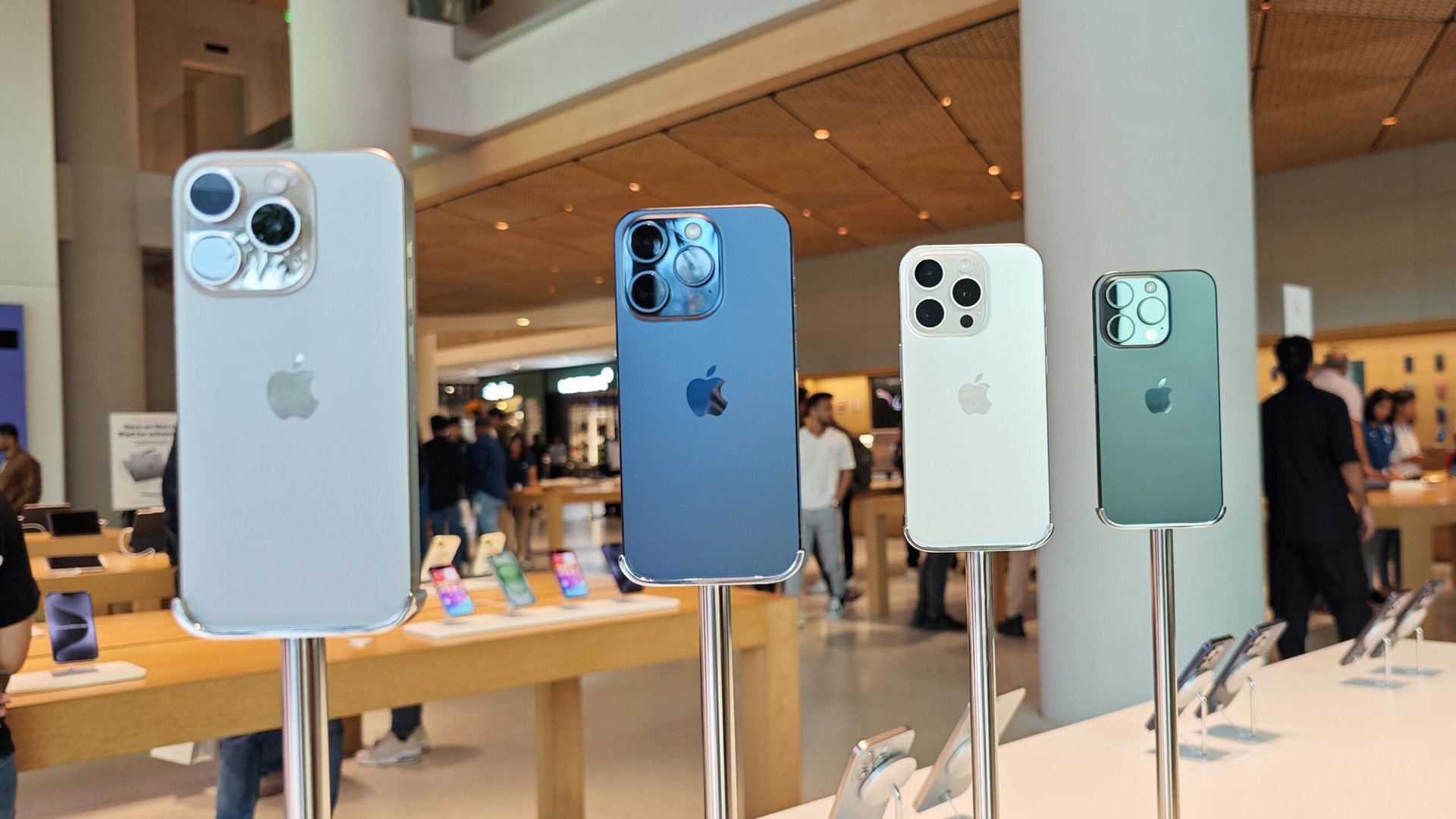Affiliate links on Android Authority may earn us a commission. Learn more.
iPhone 15 Pro overheating investigated: Is it really too hot to handle?

The iPhone 15 series hit store shelves in late September, and reports quickly followed about hot handsets, and not in the way Apple hoped. The high-temperature reports from users (as well as members of the Android Authority team) centered on more powerful iPhone 15 Pro and Pro Max variants, hinting that the new and mighty Apple A17 Pro processor may play a part in the overheating handsets. But equally, we’ve seen reports of the phones becoming hot while charging, too, which seems odd given their lackluster 20W peak charging power over USB-C.
I took our iPhone 15 Pro (purchased for testing and review) to the lab to figure out what was happening. The TDLR is that, out of the box, the iPhone 15 is much hotter than rival handsets, particularly when recording 4K video and gaming.
Several weeks later, Apple attempted to address the iPhone overheating issue with the update to iOS 17.0.3. We retested the iPhone 15 Pro after the update and found a 2°C to 4°C reduction in temperatures when stressing the phone, putting the handset more in line with rival phones and much closer to previous iPhone models.
Read on for our original results, and check out our iOS 17.0.3 iPhone 15 Pro test results for the latest findings.
iPhone 15 Pro temperature tests (iOS 17.0.2)
To corroborate the original issue, we grabbed a temperature gun and recorded the peak temperatures on the phone’s back during various workloads. We ran the same tests on the Google Pixel 7 Pro and Samsung Galaxy S23 Ultra to compare, all without cases on, no background tasks, and time to cool off between runs. Let’s jump straight into the results.
To start with, the iPhone 15 (running the original iOS 17.0.2 software) is marginally warmer than the S23 Ultra and Pixel 7 Pro when running day-to-day workloads, such as video streaming and web scrolling. However, the margin is not so wide as to call the phone problematic for these tasks. Staying below 30°C is cool enough not to be noticeable.
Push the CPUs harder with Geekbench 6, and we see the same trend; Apple’s phone is 1°C or 2°C warmer than the competition but is in roughly the same ballpark. The iPhone 15 Pro is certainly warm to the touch when running demanding tasks, but not uncomfortably so, and not too much more than our two comparison points. On average, the iPhone 15 Pro is between 2.5% and 5% hotter across these tests, which may or may not be noticeable, depending on what you’re doing.
However, once we move into more demanding waters that engage more SoC components, it’s clear that the A17 Pro chip is an issue. Turn on the six-core GPU and temperatures spike quickly. Our iPhone 15 Pro passes the 40°C mark within five minutes of running the 3DMark Wild Life stress test. Wait until the end of the 20-minute run, and the phone’s 47°C peak verges on too hot to hold. The Galaxy S23 Ultra doesn’t do great here either, but the iPhone 15 Pro is 5.7% hotter, and any handheld device approaching 50°C with any workload is worrisome.
In more demanding cases, the iPhone 15 Pro exceeded 40°C, making it uncomfortable to hold.
Our 4K/60 video recording test showcases the most significant discrepancy. After just five minutes, the iPhone 15 Pro is about 7°C hotter than the S23 Ultra and 4°C hotter than the Pixel 7 Pro, a phone already widely regarded as too warm. Worse, the iPhone 15 Pro far exceeds an acceptable level of comfort in the hand after extending the test to 10 minutes.
Looking across the results, the iPhone 15 Pro is consistently hotter than the Galaxy S23 Ultra and Pixel 7 Pro in all our tests. Sometimes the margin is small, but the overarching trend is that the more you push Apple’s latest silicon the more noticeable this difference becomes. Clearly, complaints that the iPhone 15 Pro and Pro Max can run hot are well-founded.
iPhone 15 USB-C charging runs hot too

So the iPhone 15 Pro seems quite hot in general, but what about reported issues with charging?
Unlike Android, iOS does not expose a way to obtain accurate internal battery readings, so we’ve resorted to recording the peak external case temperature. With that in mind, the battery’s working temperature is likely a good 2°C to 4°C higher than the results we’ve recorded externally, depending on how efficient Apple’s cooling setup is. To test the iPhone 15 Pro’s charging capabilities, we grabbed an official 30W Apple USB-C charger and the supplied USB-C to USB-C cable.
Peak case temperature reached a rather warm 36.1°C (we clocked an even higher 40.2°C on a Pro Max), which coincides with the handset pulling power above the 20W limit in Apple’s documentation. It’s long been suspected that these phones charge at a higher rate than Apple officially declares, and that seems to be the case, albeit with a power limit applied to keep temperatures somewhat in check. If the Pro Max spikes more power than the Pro, this could explain the even higher temperature reports we’ve seen elsewhere.
Importantly, we didn’t use the phone during this charge test, but we recorded temperatures above 40°C when web browsing and watching videos while charging the iPhone 15 Pro. The phone becomes uncomfortable to hold if you’re running any tasks while charging. Apple attempts to mitigate this by throttling charging speeds when the phone becomes very hot. In extreme cases, it scales down to 5W which takes several hours to fill the phone.
Despite low power levels, the iPhone 15 Pro and Pro Max charge as hot or hotter than rivals.
Comparing the iPhone 15 Pro’s external temperature to the Samsung Galaxy S23 Ultra’s internal battery recording showcases the scale of the issue. Remember, Apple’s charging peaks at about 20W while the S23 Ultra handles up to 45W of power. Samsung’s peak internal temperature of 35.5°C is lower than Apple’s, which we estimate hits anywhere between 38°C and 40°C (this is often where other manufacturers throttle temps), based on the external temperature reading. Furthermore, our iPhone 15 Pro warmed up much faster, again pointing to heat dissipation problems.
While our result here isn’t quite as alarming as the temperatures observed when stressing the A17 Pro chip, these temperatures are still on the high side, given the iPhone 15 Pro’s comparatively low power levels and sluggish charging speeds. The phone takes an agonizing 90 minutes to fill.
Does the iPhone 15 overheat?

There is no denying that the iPhone 15 Pro we tested is hot — too hot. At least when the phone was first launched. Even though, in theory, the phone’s A17 Pro chipset has a manufacturing advantage over the competitors we tested. It’s built on a more efficient 3nm TSMC node compared to 4nm for the Snapdragon 8 Gen 2 inside the Galaxy S23 Ultra and 5nm Samsung node for the Pixel 7 Pro’s Tensor G2. However, Apple appears to have used this advantage to push additional performance (like the additional GPU core), resulting in high temperatures when the chip is stressed.
Likewise, the phone’s charging metrics are disappointing compared to the fastest-charging Android phones. Not only are speeds sluggish, but the phone is certainly warm to the touch when charging, and internal temperatures are likely to be even higher, which bodes poorly for long-term battery life. The iPhone 15 Pro Max is even worse here, with higher power spikes leading to higher temperatures.
Apple's Pro and Pro Max target consumers were the ones most likely to run into heating issues. Thankfully Apple has fixed the latest iPhone.
The result was two phones that, while not always hot, can be pushed to more extreme temperatures by the very users Apple targets. Gamers, multitaskers, and videographers are the most likely to apply workloads that cause the iPhone 15 Pro and Pro Max to hit those too-hot-to-hold temperatures.
Thankfully, retesting the phone with the iOS 17.0.3 update shows that Apple has addressed the overheating issue, for the most part. The phone is still slightly warmer than Android rivals in 4K video recording and CPU-intensive tasks, but not so much as to be alarming to hold anymore. Consider it safe to hit that iPhone 15 buy button, and you’ll definitely want to grab that update if you haven’t already.